Brand "X" 60 to 65-Ton Locomotives |
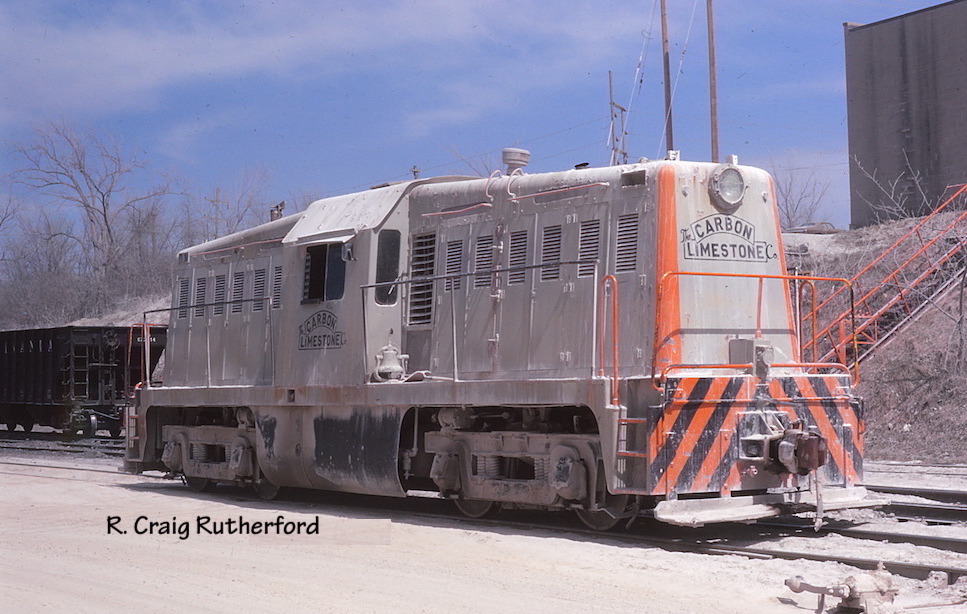
Carbon Limestone #10 at Poland Township, Ohio on 20 April 1970
|
The 60/65-ton locomotive was possibly the most commonly found in use on short line, industrial
and military railroads. Its "middle-of-the-road" horsepower made the four-axle model an easy
choice for both large and small organizations. General Electric was clearly the largest
manufacturer in terms of numbers. Although other builders were active in the market, few
of them achieved much success beyond Porter and Whitcomb.
Many of the 60/65-ton models were introduced by builders who responded to the needs of
the U.S. Military during WWII or the Korean War. The demand for new locomotives was at
a peak, and U.S. Government purchasing agents were ready to show appreciation through the
issuance of new contracts.
|
Spotting Features
|
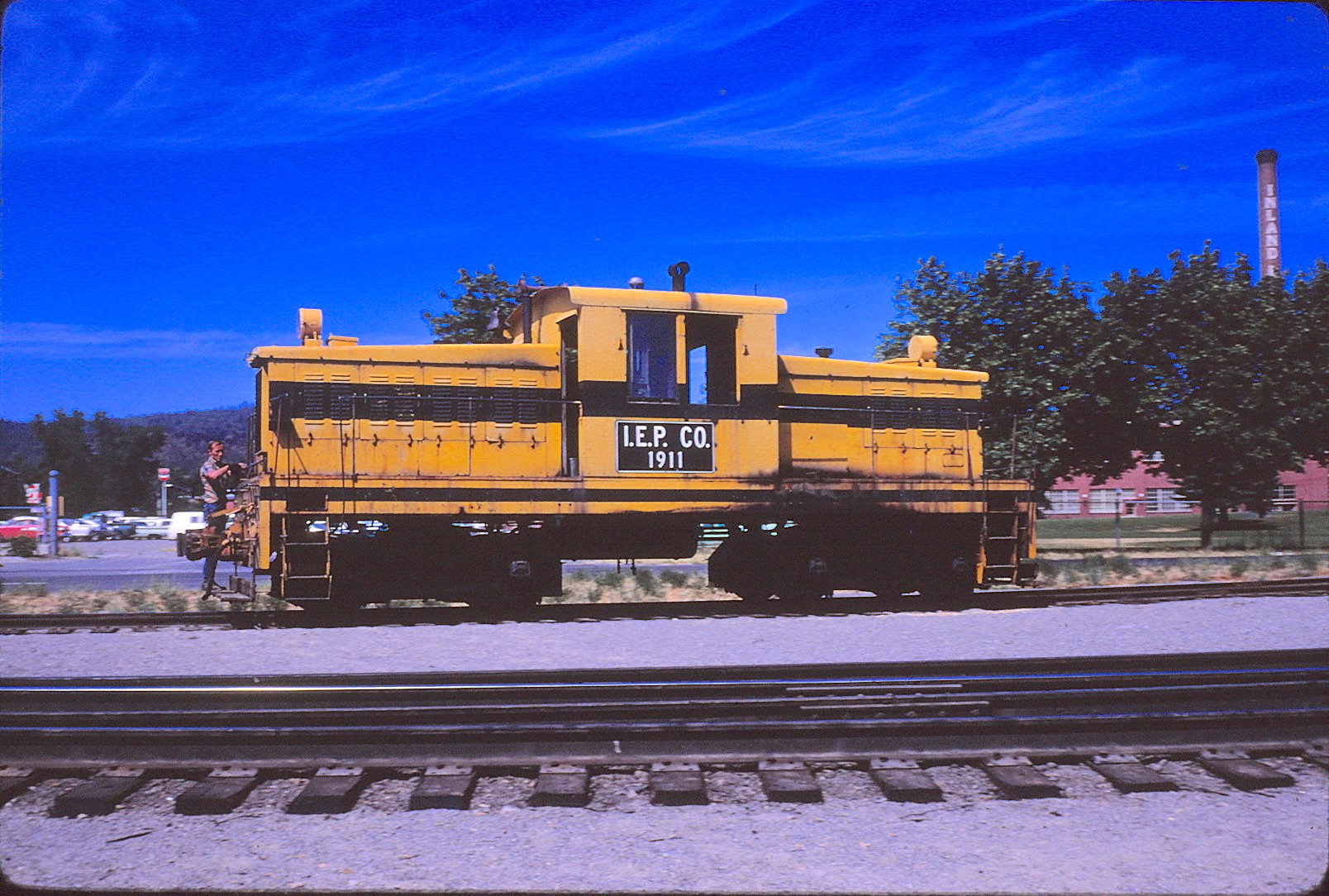
Inland Empire Paper #1911
George Turnbull photo **
Blank
|
Atlas Car & Manufacturing 65-Ton
- Greater length than Atlas 50-tonner
- Downward sloping hood, with front radiator screen
- Headlight on top of hood
- Eight louvered engine access doors on hood
- No radial coupler (as found on 50-ton Atlas)
- Built: 1934-1944
|
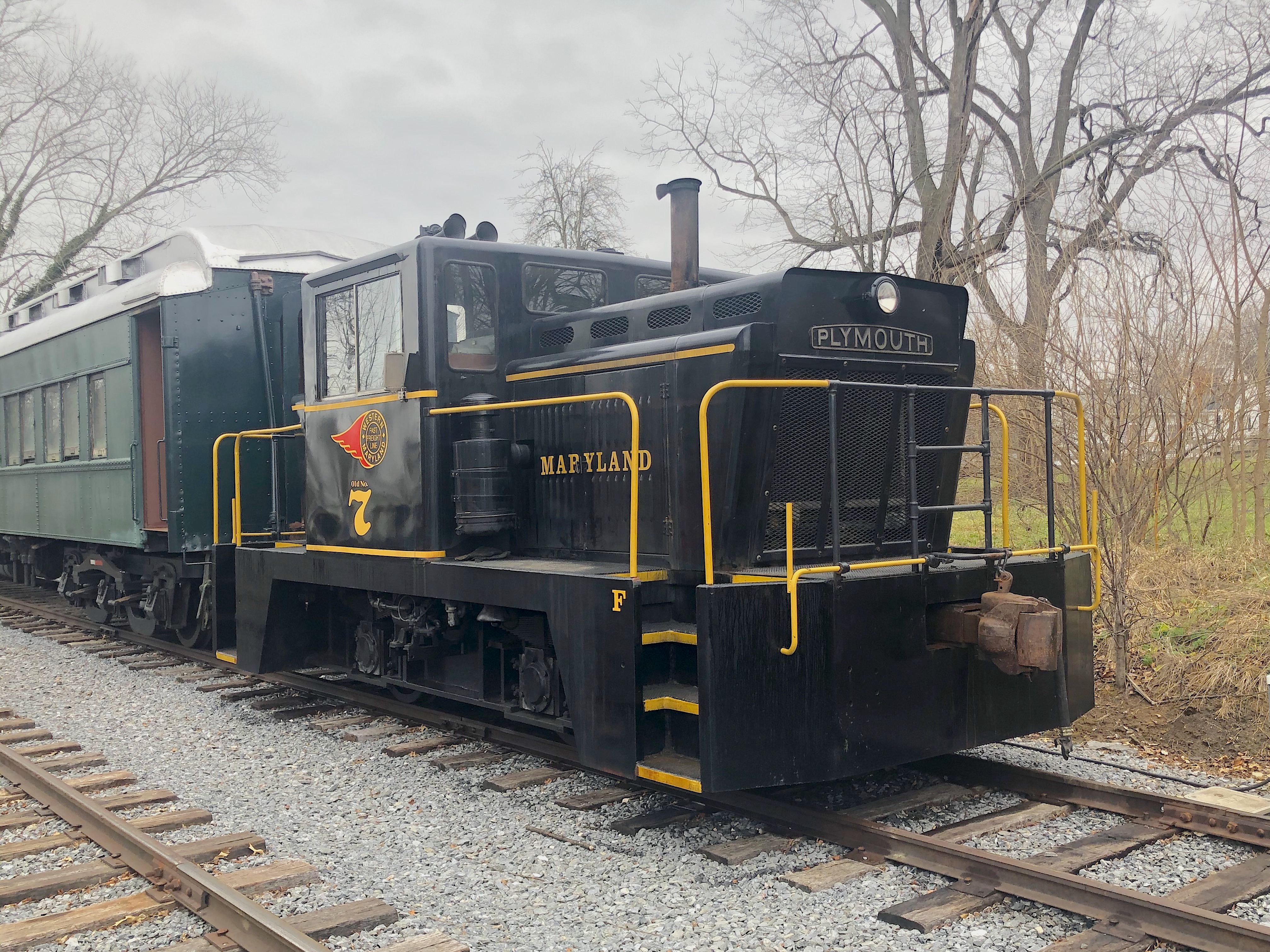
Walkerville Southern #7
Photo courtesy of Walkerdville Southern
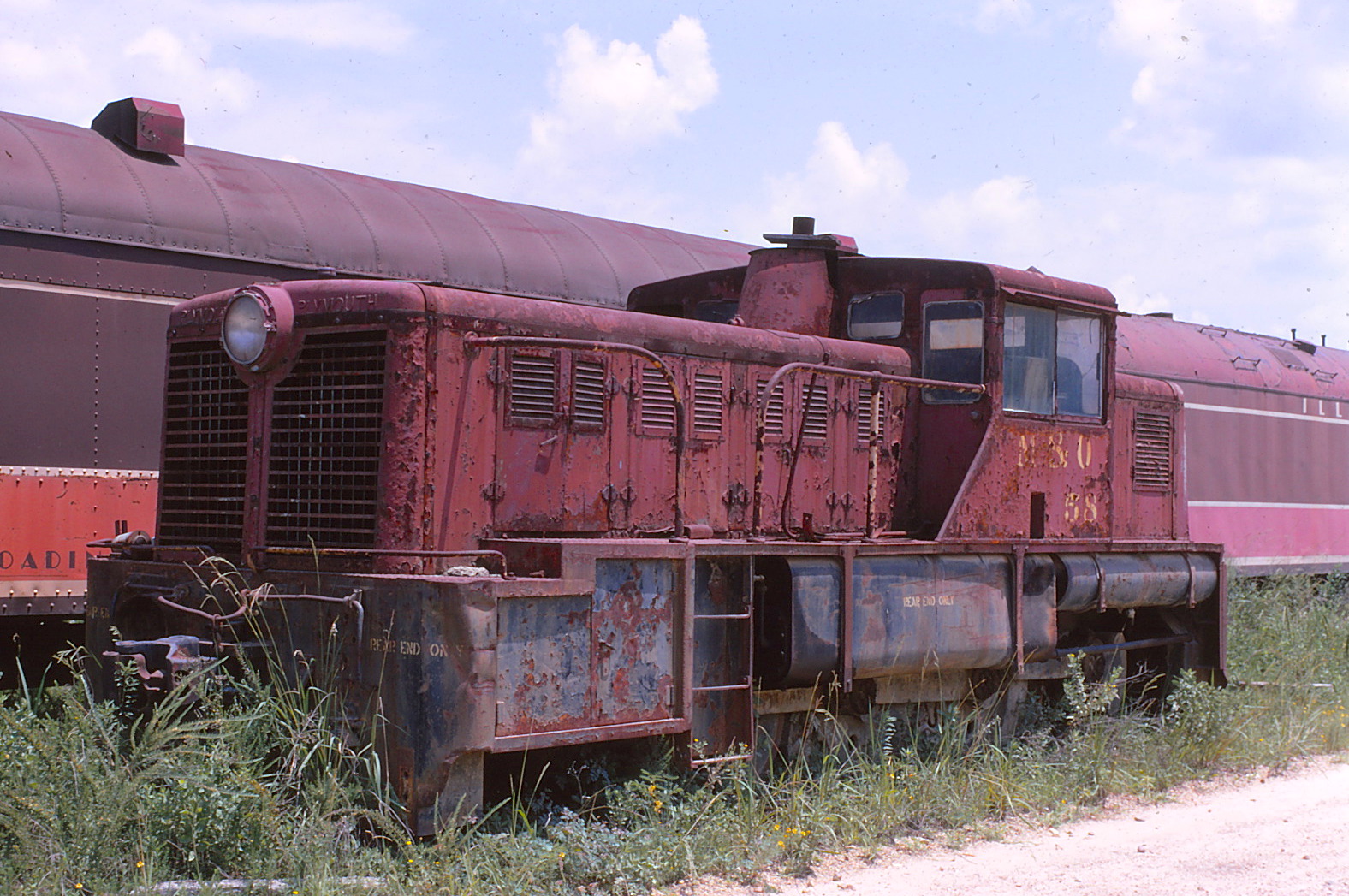 Blank
Blank
Morse & Ory
Joe Brockmeyer photo **
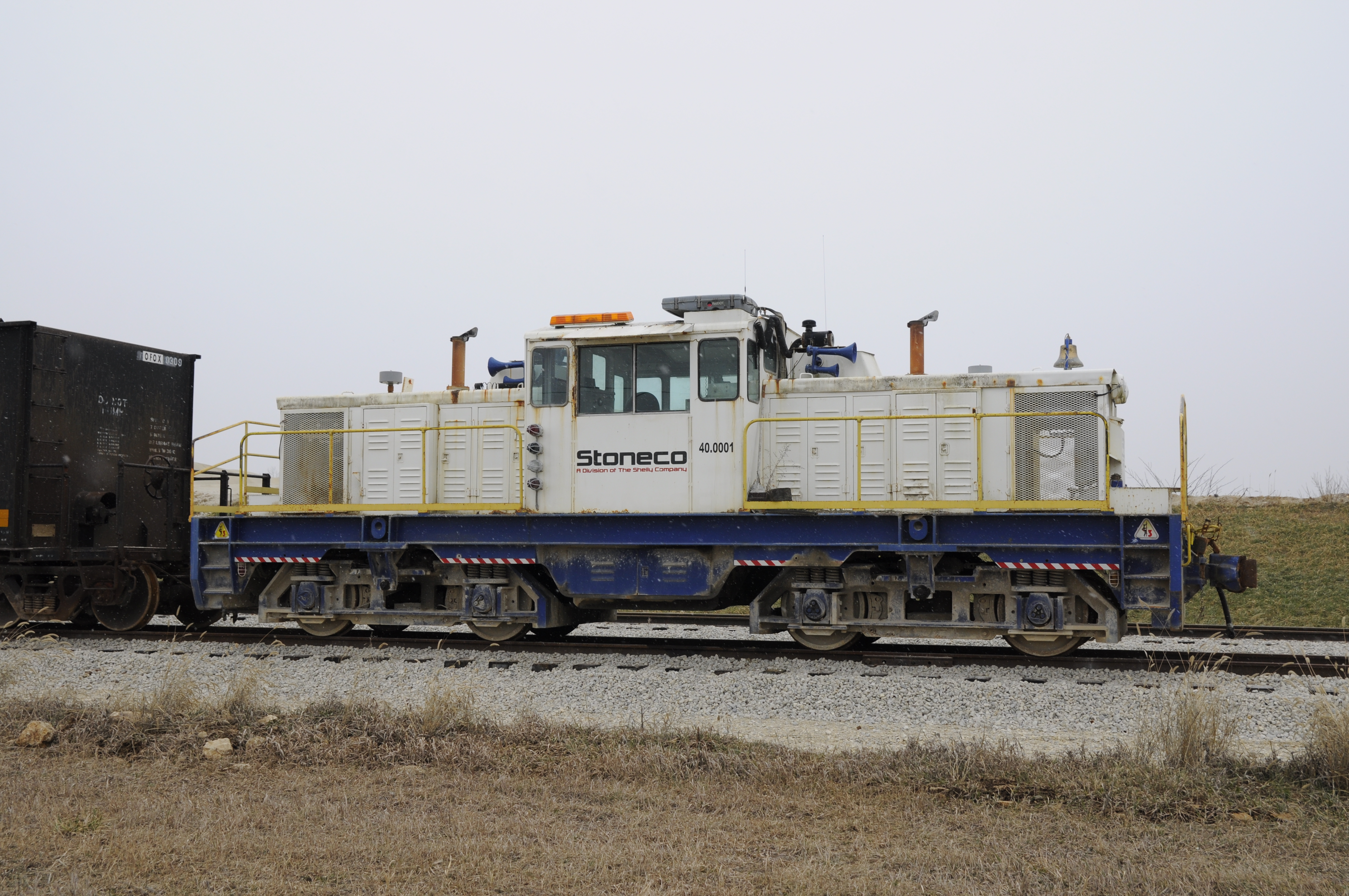 Blank
Blank
Shelly Materials
Dale Devene photo
|
Plymouth CR-4 (40/60 tons)
- Not a true center cab, rather an off-center cab
- Only 5 built
- Rigid frame with two-axles
- Leading edge of hood angles down and back
- Two engine access doors in front hood
- One large access door in rear hood
- Single exhaust stack on roof of longest hood
- Built: 1957-1965
- Blank
- Blank
- Blank
- Blank
- Blank
- Blank
- Blank
Plymouth 65-ton "Flexomotive" (1939 to 1948)
- Off-center cab
- Rigid frame with six-wheels (early model w/side rods)
- Single exhaust stack on roof of long hood
- No walkways at front nor rear
- Radiator shutter with center spline
- "Plymouth" on both sides of large headlight
- Blank
- Blank
- Blank
- Blank
- Blank
- Blank
- Blank
- Blank
- Blank
- Blank
Plymouth CR-8 (44/80-ton)
- Long stretched carbody
- Boxy appearance
- Two 4-wheel trucks
- Frame skirting between trucks
- Four pairs engine access doors
- Spacious end platform
|
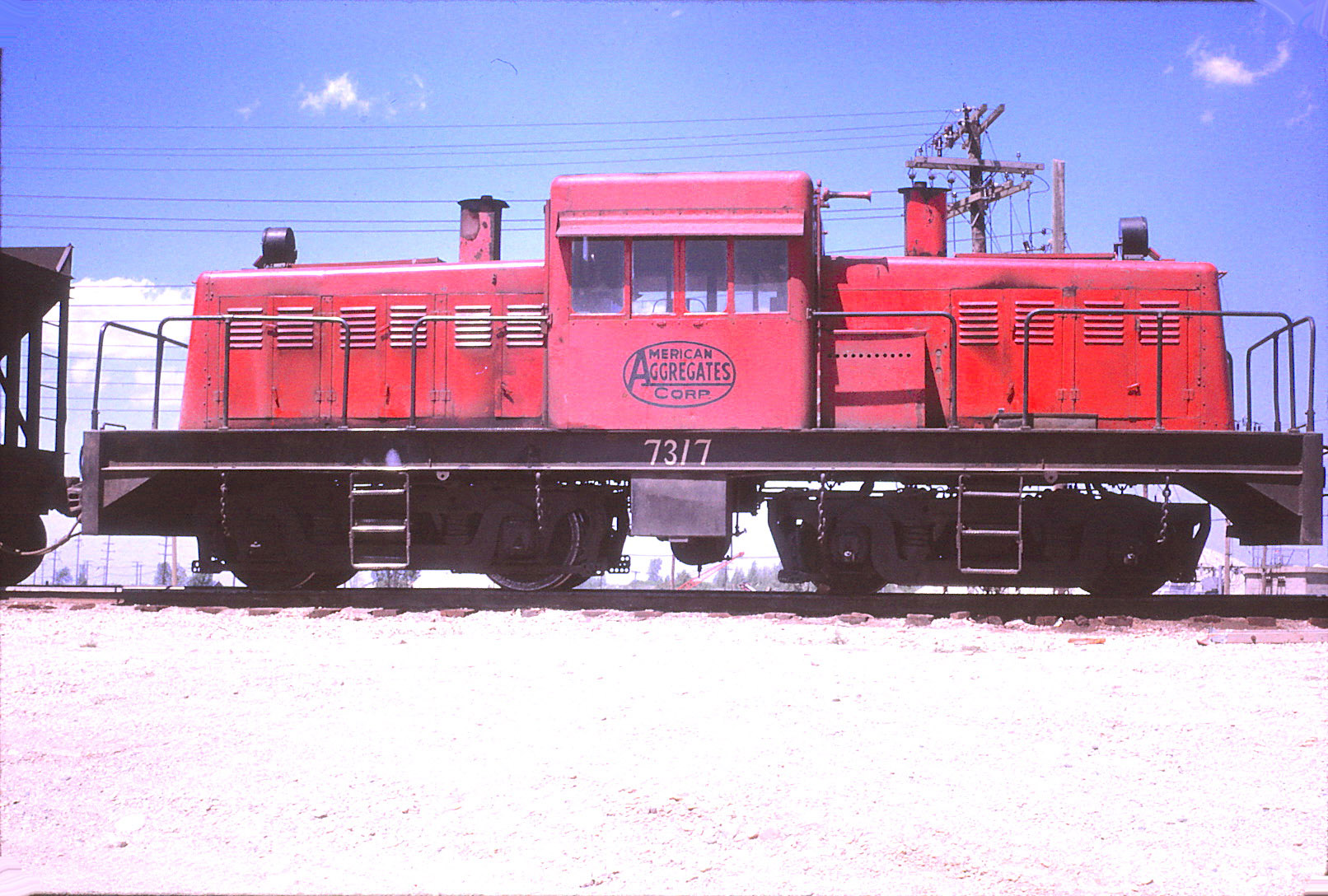
American Aggregates
Harry Juday photo **
Blank
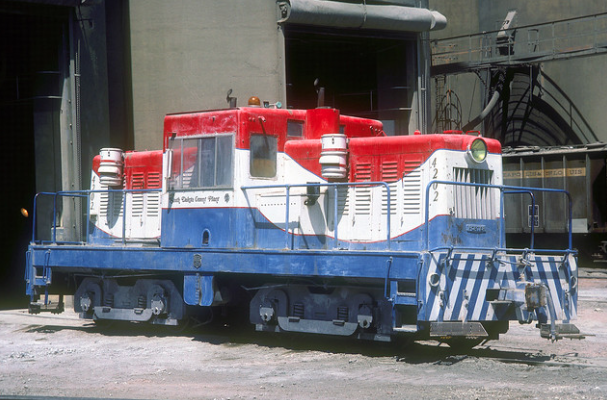
South Dakota Cement
Chuck Zeiler photo
Blank
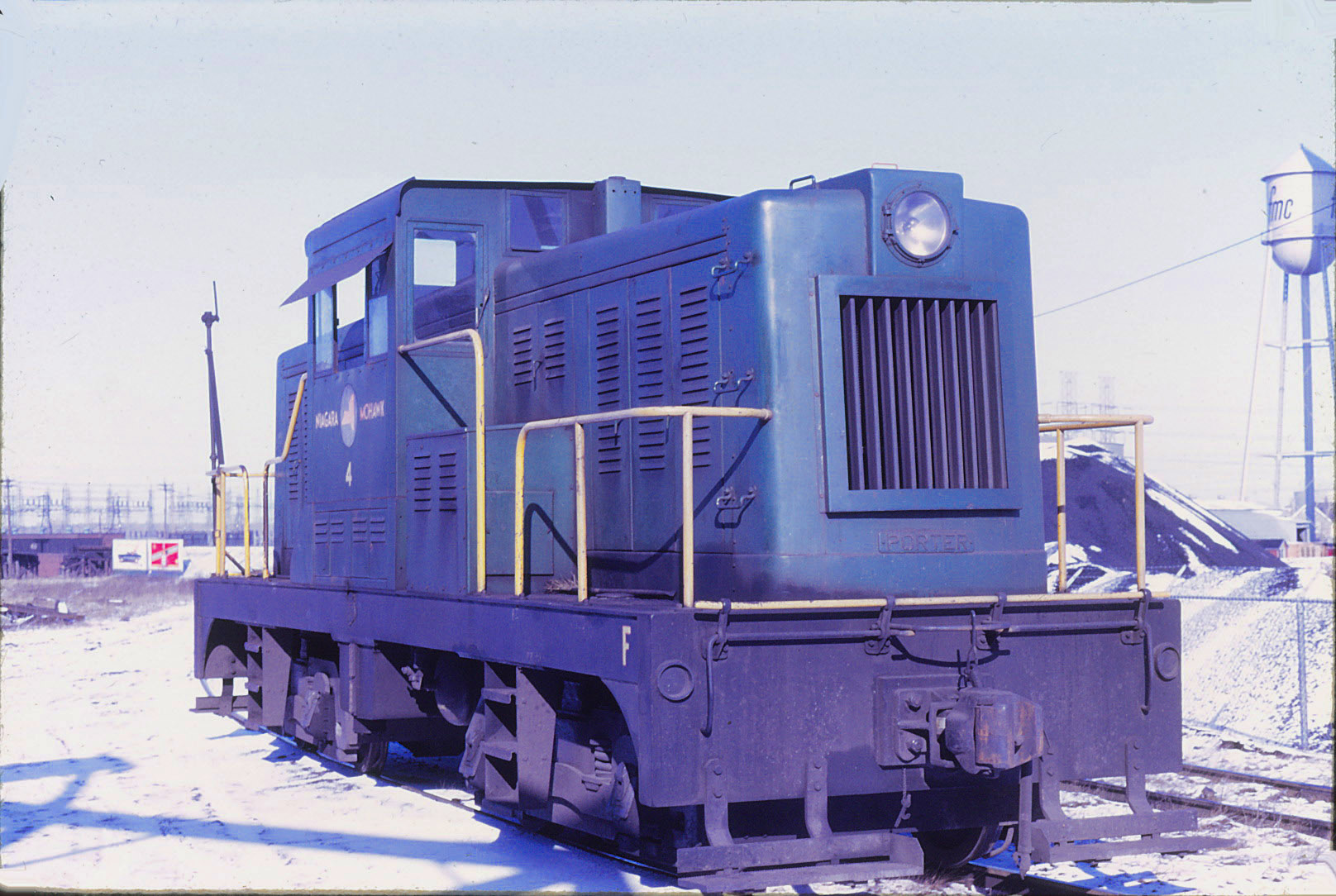
Niagara Power #4
David Turkon photo **
Blank
|
Porter 65-Ton (1940 to 1943)
- Cab with smooth roof corners
- Headlight bracket on top of hood
- Rectangular exhaust stacks
- Air compressor box on walkway in front of cab
- Locomotive access ladders centered on trucks
- I-beam frame with end platforms
- Five or six engine access doors with louvers
- Blank
- Blank
- Blank
- Blank
- Blank
Porter 65-Ton (1943 to 1946)
- Cab with smooth roof corners
- Headlight above radiator opening
- Exhaust stacks in curved shroud
- Air compressor box on walkway in front of cab
- Ladders (regular or staircase) at end of frame
- Solid frame with end platforms
- Five or six engine access doors with louvers
- Clerestory on hood roof
- Blank
- Blank
- Blank
- Blank
- Blank
Porter 65-Ton (1946 to 1950)
- Raised cab (2 steps) with roof lip
- Headlight above radiator opening
- Rectangular exhaust stacks
- Air compressor box on walkway in front of cab
- Staircase ladders (later models)
- Solid frame (with and without) end platforms
- Five or six engine access doors with louvers
- Clerestory on hood roof
|
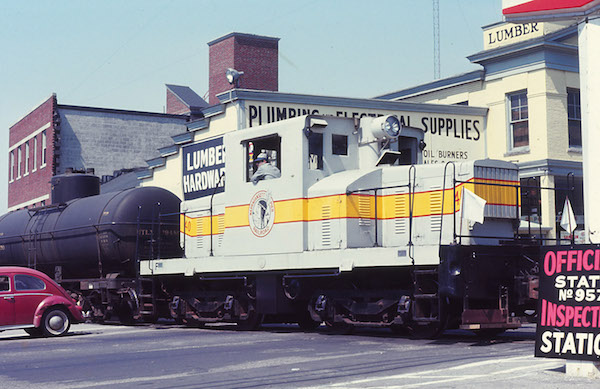
Narragansett Pier RR #40
George Turnbull photo **
Blank
|
Vulcan 65-Ton
- Large cab with roof overhang
- Exposed radiator
- Headlight bracket on hood
- Hood-high air compressor box
- Small end platforms
- Three engine access doors
- Only nine built
|
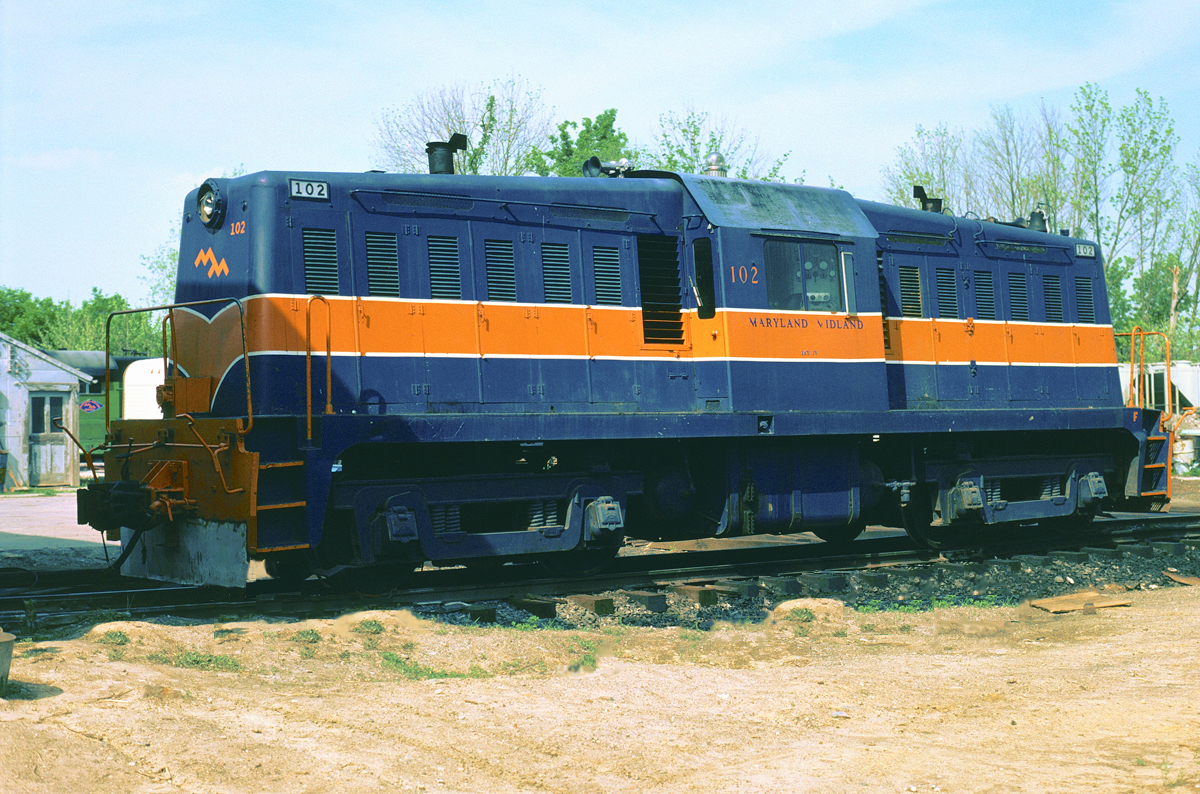
Maryland Midland #102
Ted Grumbine photo
Blank
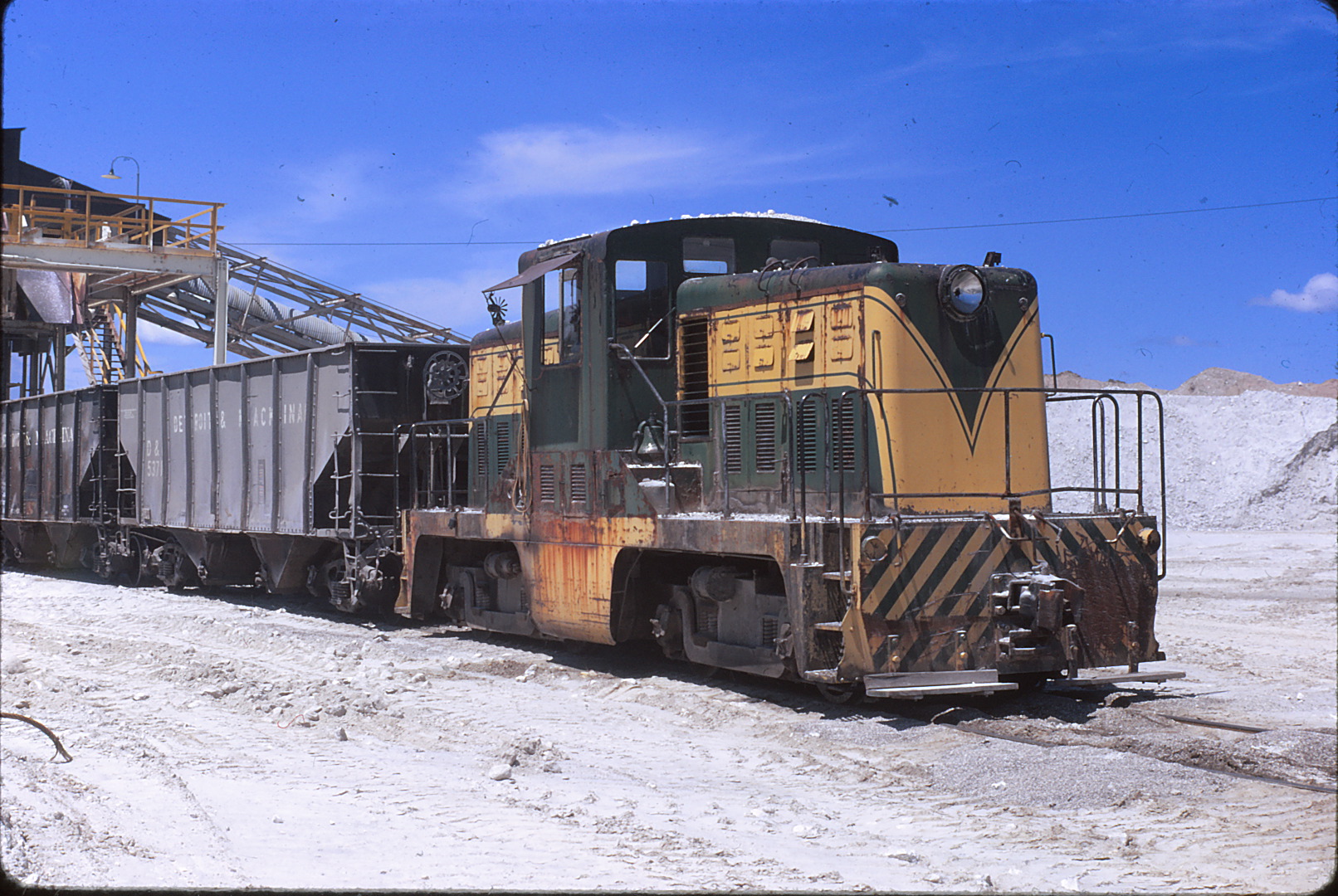
National Cement
Ray Sabo photo **
Blank
|
Whitcomb 65-Ton (Military Specification)
- Cab and hood height nearly the same
- No radiator opening at end of hood
- Vertical air intake adjacent to cab
- Short end platform
- Drop-side equalizer trucks
- Built during WWII
- Blank
- Blank
- Blank
- Blank
- Blank
- Blank
- Blank
- Blank
- Blank
Whitcomb 65-Ton
- Cab raised (two steps)
- No radiator opening at end of hood
- Vertical air intake adjacent to cab
- Short end platform
- Drop equalizer trucks
- Built; 1943-1952
|
Notes and Reference sources:
- Critters, Dinkys & Centercabs by Jay Reed
- The Second Diesel Spotters Guide by Jerry A. Pinkepank
- Locomotive Encyclopedia (1956) by Simons-Boardman
** Photo from R. Craig collection
|
| Formatted by: R.Craig
New: 1 February 2020
|






 Blank
Blank
 Blank
Blank


